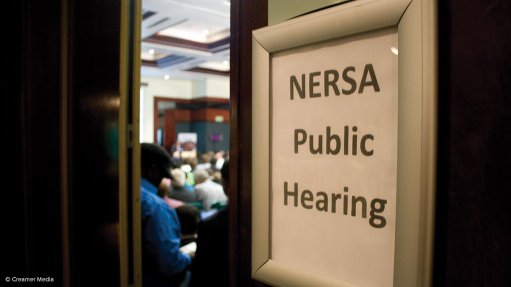Nuclear, shale gas should be part of SA’s future power mix – Peters
Energy Minister Dipuo Peters has reiterated her support for the development of new nuclear capacity in South Africa, which she says is necessary to meet the country’s commitment to lowering its carbon footprint, while ensuring sufficient baseload capacity to support economic growth.
Speaking at the Africa Energy Indaba 2013, in Johannesburg, Peters indicated that the South African government remained convinced that nuclear should remain part of the mix of generation options available, notwithstanding the intensification of safety concerns since the Fukushima crisis, in Japan.
The current version of South Africa’s Integrated Resource Plan, which would soon be reviewed, envisaged the introduction of 9 600 MW of new nuclear capacity between 2023 and 2030.
But many questions had been raised about the affordability of the programme and whether or not it was prudent to invest in large generating plants ahead of smaller, more modular solutions that could be more responsive to changes in demand-growth patterns.
South Africa’s decision on the programme had already been delayed to accommodate a voluntary peer review by the International Atomic Energy Agency (IAEA) of South Africa’s preparedness to safely add new capacity beyond that which exists already at Eskom’s Koeberg power plant, in the Western Cape.
The agency undertook an Integrated Nuclear Infrastructure Review (INIR) mission to South Africa in late January and early February, following an internal self-assessment report, completed by domestic nuclear stakeholders in mid-2012.
A preliminary report was handed to government on February 8 and a full report on the 19 areas covered by the INIR would be presented in the coming months.
South Africa was the first country with existing nuclear capacity to subject itself to an IAEA assessment and Peters argued that it was evidence of government’s commitment to pursuing the programme responsibly and transparently.
The Department of Energy (DoE) had commissioned consultants to interrogate the cost and financing options associated with the development, which some have estimated could involve an investment of up to R1-trillion.
It had also been confirmed that the National Nuclear Energy Executive Coordination Committee, which is chaired by Deputy President Kgalema Motlanthe, would provide further clarity in July as to the approach South Africa planned to take on the development of new nuclear capacity.
Renewable-energy And Shale Gas Prospects Not Dimmed
Peters argued that a commitment to nuclear did not diminish the country’s desire to increase its installed renewable-energy capacity, adding that details on the third bid window under the Renewable Energy Independent Power Producer Procurement Programme would be released “imminently”.
The Minister also argued that the country’s shale gas resources needed to be confirmed through a responsible exploration and development programme, as the gas arising could be a “game changer” for energy security.
She promised that any hydraulic fracturing, or fracking, activities would be well regulated and would be pursued within the environmental and water constraints that were confronting South Africa.
But Peters insisted that confirmation of the gas resources was necessary, as these resources could prove crucial in providing a lower-carbon fuel source for electricity and liquid fuels production.
In the meantime, South Africa was engaging with the authorities in Mozambique and Namibia to assess the potential of importing additional natural gas for use in power generation.
Some of that gas could be consumed by private power producers, under a baseload procurement programme that could be launched later in the year.
On December 19, Peters published a determination indicating that the DoE planned to procure 2 500 MW of private coal-fired capacity between 2014 and 2024, 2 652 MW of new natural gas and diesel-fuelled power generation between 2021 and 3025, and 2 609 MW of mostly imported hydropower between 2022 and 2024.
Comments
Press Office
Announcements
What's On
Subscribe to improve your user experience...
Option 1 (equivalent of R125 a month):
Receive a weekly copy of Creamer Media's Engineering News & Mining Weekly magazine
(print copy for those in South Africa and e-magazine for those outside of South Africa)
Receive daily email newsletters
Access to full search results
Access archive of magazine back copies
Access to Projects in Progress
Access to ONE Research Report of your choice in PDF format
Option 2 (equivalent of R375 a month):
All benefits from Option 1
PLUS
Access to Creamer Media's Research Channel Africa for ALL Research Reports, in PDF format, on various industrial and mining sectors
including Electricity; Water; Energy Transition; Hydrogen; Roads, Rail and Ports; Coal; Gold; Platinum; Battery Metals; etc.
Already a subscriber?
Forgotten your password?
Receive weekly copy of Creamer Media's Engineering News & Mining Weekly magazine (print copy for those in South Africa and e-magazine for those outside of South Africa)
➕
Recieve daily email newsletters
➕
Access to full search results
➕
Access archive of magazine back copies
➕
Access to Projects in Progress
➕
Access to ONE Research Report of your choice in PDF format
RESEARCH CHANNEL AFRICA
R4500 (equivalent of R375 a month)
SUBSCRIBEAll benefits from Option 1
➕
Access to Creamer Media's Research Channel Africa for ALL Research Reports on various industrial and mining sectors, in PDF format, including on:
Electricity
➕
Water
➕
Energy Transition
➕
Hydrogen
➕
Roads, Rail and Ports
➕
Coal
➕
Gold
➕
Platinum
➕
Battery Metals
➕
etc.
Receive all benefits from Option 1 or Option 2 delivered to numerous people at your company
➕
Multiple User names and Passwords for simultaneous log-ins
➕
Intranet integration access to all in your organisation

















